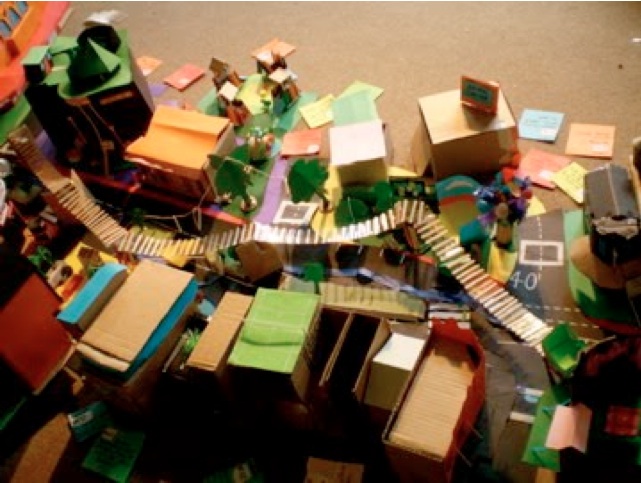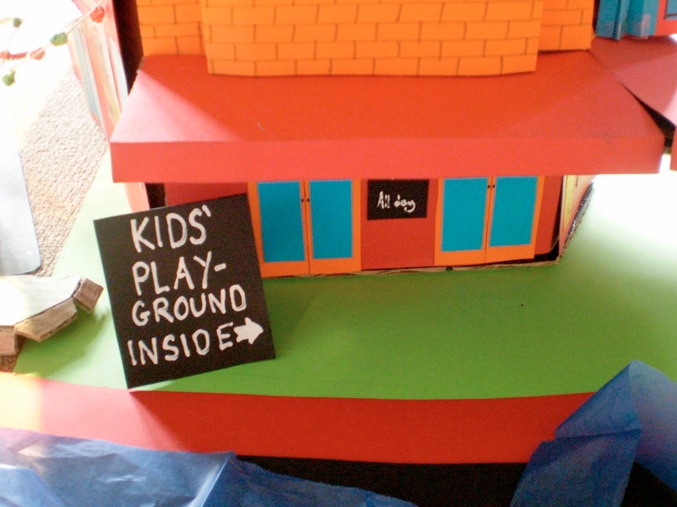We are very excited to announce the second major Boho project for 2012-13. Alongside our lecture theatre performance exploring concepts of Epidemiology and Network Theory, we will also be developing a new live game performance based on concepts of Climate and Social Modelling.Over the last few years, Boho's research into Game Theory, Network Theory and Complex Systems science has led us to a variety of strange and fascinating fields of research. Sometimes these branches of study are dead ends for us - they are highly abstract schools of thought with little application to our work, or they are extremely narrow sub-sub-disciplines which require extensive technical knowledge to comprehend, or they simply do not interest and excite us as artists and theatre-makers. One branch of contemporary science in particular, though, we have encountered time and time again since we first began research for A Prisoner's Dilemma in 2006: the field of scientific modelling.
 Image from Applespiel's Sexy Urban Design Team.
Image from Applespiel's Sexy Urban Design Team.
What is a model?A model is a mental or formal representation of a system which is used to anticipate its future behaviour. When we store information from the past and use it to predict the behaviour of the future, we are modelling.Modelling is a universal activity. All living creatures store information from the past and from it extract regularities. These regularities are a model of the environment which that creature uses to anticipate the future.'Whether it is a tree responding to shortening day length by dropping its leaves and preparing its metabolism for winter – in advance of winter – or a naked Pleistocene ape storing food in advance of winter for the same reasons, both are using models.'As Joshua Epstein points out, 'Anyone who ventures a projection, or imagines how a social dynamic - an epidemic, war, or migration - would unfold is running some model... when you close your eyes and imagine an epidemic spreading, or any other social dynamic, you are running some model or other. It is just an implicit model that you haven't written down.'Because we all use models to help imagine the future, the question is not 'Should we use models?' but 'How do different models compare with each other?' The difference, therefore, is between the internal implicit models which we create instinctively, and the explicit models that scientists use.University College London Research ResidencyWhile researching each of our three major shows, we found ourselves reading about and drawing on various kinds of scientific models. In Food for the Great Hungers we even featured several models: a primitive agent-based model made from oil and water to demonstrate how cities can devolve into isolated communities over time, and a live representation of Per Bak's famous sandpile model of self-organised criticality. Following True Logic of the Future, we decided to pursue the idea of modelling in performance further.The 'sandpile' model of self-organised criticality featured in Food for the Great Hungers.Thanks to support through the N.E.D. Foundation, David undertook a research residency at the Environment Institute of University College London. Over September - November 2011, David worked with Dr Yvonne Rydin and other EOI research scientists to explore the theory and practice of systems modelling. The aim of this research was to identify and highlight ways in which theatre artists might utilise techniques from systems modelling to construct interactive performances based on models, as well as ways in which interactive theatre might feed into and inform the creation of scientific modelsThe result of David's research was a report entitled Performance Pieces on Climate Models. As well as providing a brief introduction to the science of modelling and several key kinds of model, the report sketches out some possible guidelines for utilising these models in a performance context. If you are interested, the report is available for download as a PDF from the UCL Environment Institute website.Modelling PerformanceOver 2012-13, Boho will use this research to develop a new performance based on modelling, in particular on the science of participatory co-modelling. Participatory co-models are frequently constructed at the ecosystem scale, to inform management of forests, river systems, fisheries and national parks. This performance will focus on a smaller-scale, though no less complex, system: an urban community at the scale of a city block. The material for this representation of the city as a complex system will draw on the UCL Environment Institute's Building Health Into Cities report. This multi-disciplinary report offers a detailed conception of the urban community as an highly-connected network of diverse components which interact to produce a community which is safe, pleasant, noisy, polluted, tightly-knit, fractured or dangerous for its inhabitants.The performance will offer participants the opportunity to manage this system and experience first-hand how the complex interplay of elements throughout complex systems such as urban communities results in unpredictable behaviour at the system leve, and what strategies and tactics might be most effective at dealing with this uncertainty.Artists and TimelineWhile Jack and Michael continue work on Boho's Epidemiology-based lecture performance, David will take the lead on the Modelling show, working with Boho founding member and the editor of CSIRO's Maths-By-Email, David Shaw. Other collaborators will include members of Sydney collective Applespiel (Nathan Harrison, Nikki Kennedy and Rachel Roberts) and members of UK company Coney.The next stage of development for the project will take place from September - November 2012. Thanks to a bursary offered by the UCL Environment Institute and an Australia Council Inter-Arts grant, David Finnigan, David Shaw and the three Applespiel participants will travel to London with artists from UK company Coney to devise and workshop the new performance. Over three months a performance text will be written and workshopped and different styles of interactivity will be explored and tested, leading to a first-draft performance at the end of November. Boho aims to present the first full production of this work before the end of 2013.
The material for this representation of the city as a complex system will draw on the UCL Environment Institute's Building Health Into Cities report. This multi-disciplinary report offers a detailed conception of the urban community as an highly-connected network of diverse components which interact to produce a community which is safe, pleasant, noisy, polluted, tightly-knit, fractured or dangerous for its inhabitants.The performance will offer participants the opportunity to manage this system and experience first-hand how the complex interplay of elements throughout complex systems such as urban communities results in unpredictable behaviour at the system leve, and what strategies and tactics might be most effective at dealing with this uncertainty.Artists and TimelineWhile Jack and Michael continue work on Boho's Epidemiology-based lecture performance, David will take the lead on the Modelling show, working with Boho founding member and the editor of CSIRO's Maths-By-Email, David Shaw. Other collaborators will include members of Sydney collective Applespiel (Nathan Harrison, Nikki Kennedy and Rachel Roberts) and members of UK company Coney.The next stage of development for the project will take place from September - November 2012. Thanks to a bursary offered by the UCL Environment Institute and an Australia Council Inter-Arts grant, David Finnigan, David Shaw and the three Applespiel participants will travel to London with artists from UK company Coney to devise and workshop the new performance. Over three months a performance text will be written and workshopped and different styles of interactivity will be explored and tested, leading to a first-draft performance at the end of November. Boho aims to present the first full production of this work before the end of 2013.
 Image from Applespiel's Sexy Urban Design Team.
Image from Applespiel's Sexy Urban Design Team.
